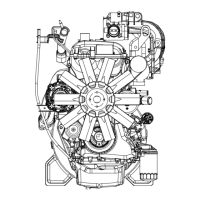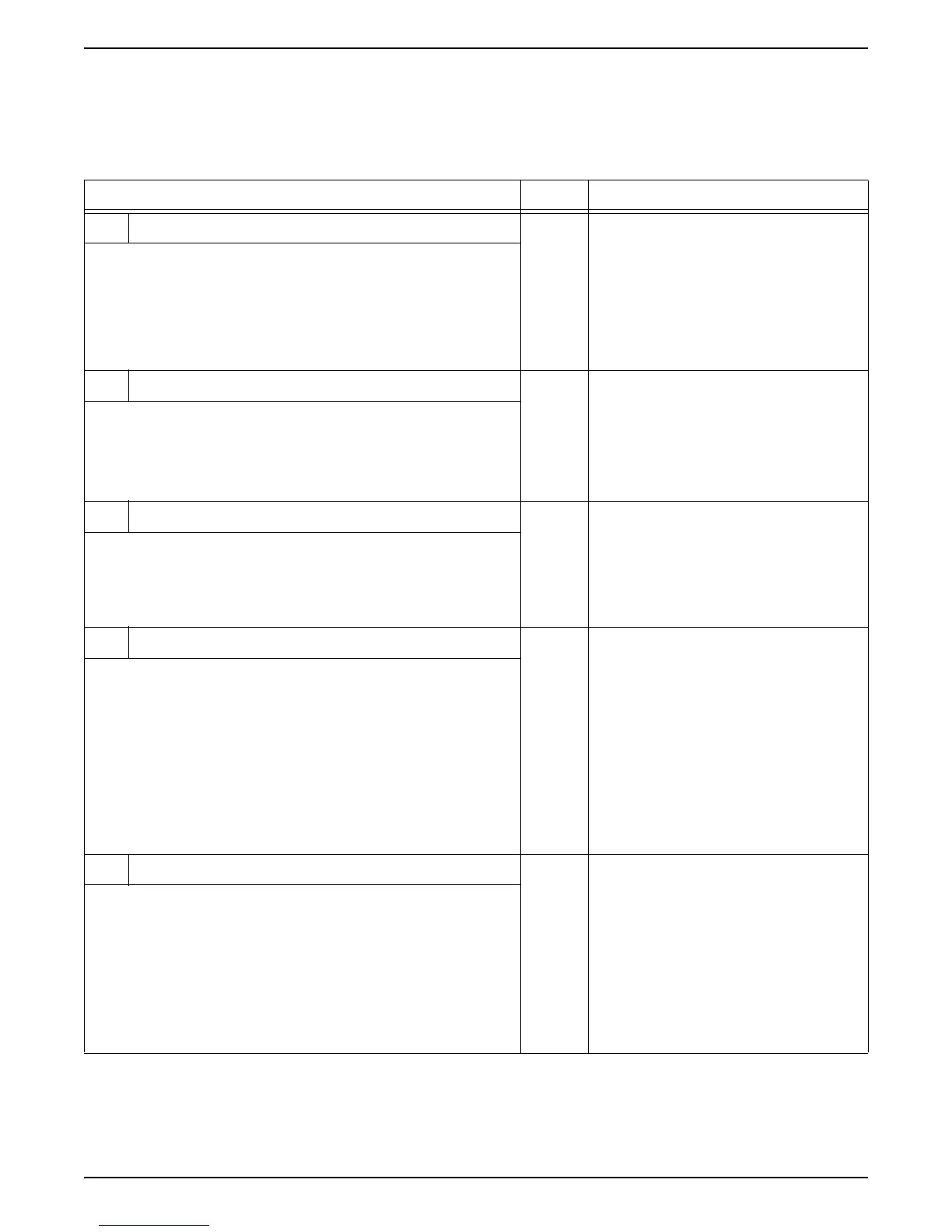DSG-423 FUEL SYSTEM
04-28
The pinpoint tests below should be performed after the
preliminary tests and “Engine Cranks but Will Not
Start” chart Steps 1-3. Any electrical diagnostics should
have been performed to eliminate any sensor, GCP or
solenoid valve problems before proceeding.
Engine Stops Running - Dies
Test Step Result Action to Take
1 Check for icing or freezing of the regulator. Yes
No
The presence of ice on the converter,
with the engine running, indicates the
possibility of a coolant supply problem.
Check Coolant level and the coolant
system for leaks. Check for proper
coolant type.
Go to Step 2.
• With the Engine at Idle.
• Check for ice or frost build up on the converter casing and
outlet port.
Is ice present?
2 Check FCV vacuum fitting bypass port. Yes
No
Clean out bypass with a .050 size pin
or drill bit and retest.
CAUTION: Do not enlarge the by-
pass port.
Go to Step 3.
• The bypass port is located on the back of the 90 degree
elbow which connects the vacuum line from the converter
to the FCV valve.
Is this bypass partially closed with dirt or debris?
3 Check regulator fuel supply. Yes
No
The fuel filter may be restricting flow or
the fuel lock may be intermittent. Go
to Step 4.
Go to Step 5.
• Using Woodward WTK-1 test kit, install the primary
pressure gauge as described in section 475G-1.
• Start the engine to induce the failure.
Is the primary pressure less than "X" psi or fluctuating?
4 Check fuelock supply voltage. Yes
No
12 volt fuelock activation circuit is
open, shorted to ground or the GCP
module is faulty. Check wiring,
connectors and fuses for possible
cause.
Fuel filter element may be clogged,
inspect and/or replace the fuel filter as
described in section 475F-1. Repeat
test Step 3, if pressure is still less than
specified replace the fuel lock and re-
test before moving to Step 5.
• Key OFF.
• Disconnect Fuelock connector from harness.
• Key ON.
• Using a high impedance DVOM, check for 12 volt supply
at the harness connector.
Is the voltage less than 11.5 volts?
5 Check regulator operation. Yes
No
The Regulator is functioning properly
and the problem may be with the FCV
valve, vacuum hoses or carburetor.
Go to Step 6.
The Regulator is malfunctioning. See
section 475R-1 for service of the
regulator. Repair or replace as
necessary.
• Using Woodward WTK-1 secondary pressure gauge as
described in section 475G-1. (note: the secondary spring
color and pressure range)
• Remove the vacuum hose from the FCV valve to the
regulator.
• Start the engine.
Is the pressure constant and at -1.5 inches of w.c. as
specified?

